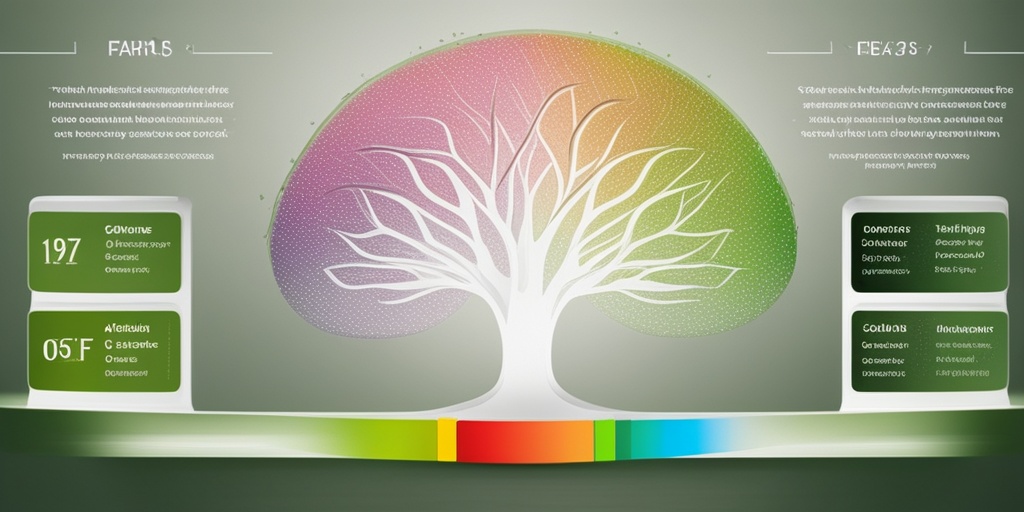“`html
What Is Fahr’s Disease?
Fahr’s Disease, also known as familial idiopathic basal ganglia calcification, is a rare neurological disorder characterized by abnormal calcium deposits in the brain, particularly in the basal ganglia. This condition can lead to a variety of neurological symptoms and complications, making it a significant concern for those affected and their families.
Understanding the Causes
The exact cause of Fahr’s Disease remains largely unknown, but it is believed to have a genetic component. Some studies suggest that mutations in specific genes may contribute to the development of this condition. The inheritance pattern can vary, with both autosomal dominant and recessive forms reported. This means that the disease can be passed down through families, increasing the likelihood of occurrence in certain genetic lineages.
How Common Is Fahr’s Disease?
Fahr’s Disease is considered extremely rare, with only a few hundred cases documented worldwide. Its rarity often leads to challenges in diagnosis and treatment, as many healthcare professionals may not be familiar with the condition. This is why consulting a Fahr’s Disease specialist is crucial for accurate diagnosis and management.
Fahr’s Disease Symptoms
The symptoms of Fahr’s Disease can vary widely among individuals, depending on the extent of calcification and the areas of the brain affected. Common symptoms include:
- Movement Disorders: Patients may experience dystonia, tremors, or rigidity, which can significantly impact mobility.
- Cognitive Impairment: Some individuals may face challenges with memory, attention, and other cognitive functions.
- Psychiatric Symptoms: Depression, anxiety, and other mood disorders can also manifest in those with Fahr’s Disease.
- Seizures: In some cases, seizures may occur due to the abnormal brain activity associated with calcifications.
- Speech Difficulties: Affected individuals might struggle with speech, leading to communication challenges.
Age of Onset
Fahr’s Disease can present at various ages, but symptoms typically begin in early adulthood. However, there have been cases reported in children, raising concerns about the age of onset and the need for early diagnosis. If you notice any unusual symptoms in yourself or a loved one, it is essential to seek medical advice promptly.
Diagnosis and Imaging
Diagnosing Fahr’s Disease often involves a combination of clinical evaluation and imaging studies. Radiology plays a crucial role, with brain imaging techniques such as MRI revealing the characteristic calcifications in the basal ganglia. These imaging findings are essential for differentiating Fahr’s Disease from other neurological disorders.
Genetic Testing
For those with a family history of Fahr’s Disease, genetic testing may be recommended to identify potential mutations associated with the condition. This can provide valuable information for family planning and understanding the likelihood of passing the disease to future generations.
Life Expectancy and Management
While Fahr’s Disease can lead to significant health challenges, many individuals can lead relatively normal lives with appropriate management. The life expectancy of those affected can vary, but early intervention and supportive therapies can improve quality of life. Treatment often focuses on managing symptoms, which may include medications for movement disorders and psychiatric symptoms.
For more information and resources on Fahr’s Disease, consider visiting Yesil Health AI, where you can find evidence-based health answers and support.
In conclusion, Fahr’s Disease is a complex condition that requires careful diagnosis and management. If you or someone you know is experiencing symptoms associated with this disorder, don’t hesitate to reach out to a healthcare professional for guidance. Early intervention can make a significant difference in managing this rare disease. 🌟
“`

“`html
Fahr’s Disease Causes
Fahr’s Disease, also known as familial idiopathic basal ganglia calcification, is a rare neurological disorder characterized by abnormal calcium deposits in the brain, particularly in the basal ganglia. Understanding the causes of Fahr’s Disease is crucial for both diagnosis and management. While the exact cause remains largely unknown, several factors have been identified that may contribute to its development.
Genetic Factors
One of the primary suspected causes of Fahr’s Disease is genetic predisposition. Research indicates that mutations in specific genes may lead to the calcification seen in this condition. The most commonly associated gene is SLC20A2, which plays a role in phosphate transport. Mutations in this gene can disrupt normal calcium and phosphate metabolism, leading to the accumulation of calcium in the brain.
In addition to SLC20A2, other genes such as PDGFB and PDGFRB have also been implicated in some familial cases of Fahr’s Disease. Genetic testing can help identify these mutations, providing valuable information for affected individuals and their families.
Metabolic Disorders
Metabolic disorders may also play a role in the development of Fahr’s Disease. Conditions that affect calcium and phosphate metabolism, such as hyperparathyroidism or hypoparathyroidism, can lead to abnormal calcium deposits in the brain. These disorders can disrupt the delicate balance of minerals in the body, contributing to the calcification process.
Environmental Factors
While genetic and metabolic factors are significant, environmental influences cannot be overlooked. Some studies suggest that exposure to certain toxins or heavy metals may increase the risk of developing Fahr’s Disease. However, more research is needed to establish a clear link between environmental factors and the disease.
Fahr’s Disease Risk Factors
Identifying risk factors for Fahr’s Disease can aid in early diagnosis and intervention. While the disease is rare, certain factors may increase the likelihood of developing this condition.
Family History
A strong family history of Fahr’s Disease is one of the most significant risk factors. If a close relative has been diagnosed with the condition, the likelihood of developing it increases. Genetic counseling may be beneficial for families with a history of the disease, as it can provide insights into inheritance patterns and the potential for genetic testing.
Age and Gender
Fahr’s Disease typically manifests in adulthood, with the age of onset usually ranging from the late 20s to early 50s. While it can occur in children, cases are exceedingly rare. Additionally, some studies suggest that males may be more frequently affected than females, although the reasons for this disparity are not fully understood.
Neurological Symptoms
Individuals exhibiting neurological symptoms such as movement disorders, cognitive decline, or psychiatric issues may be at a higher risk for Fahr’s Disease. These symptoms often arise due to the calcification affecting brain function. Early recognition of these symptoms can lead to timely evaluation and diagnosis.
Other Medical Conditions
Certain medical conditions may also increase the risk of developing Fahr’s Disease. For instance, individuals with a history of vascular diseases or those who have experienced significant head trauma may be more susceptible. Additionally, metabolic disorders that affect calcium and phosphate levels can further elevate the risk.
Conclusion
While the exact causes of Fahr’s Disease remain elusive, understanding the potential genetic, metabolic, and environmental factors can help in identifying at-risk individuals. If you or a loved one is experiencing symptoms associated with Fahr’s Disease, consulting a specialist is crucial for proper diagnosis and management. Early intervention can significantly impact the quality of life for those affected by this rare condition. 🧠✨
“`

“`html
Fahr’s Disease Diagnosis
Diagnosing Fahr’s Disease can be a complex process due to its rarity and the overlap of symptoms with other neurological disorders. This condition is characterized by abnormal calcium deposits in the brain, particularly in the basal ganglia, which can lead to a variety of neurological symptoms. Here’s a closer look at how Fahr’s Disease is diagnosed.
Clinical Evaluation
The first step in diagnosing Fahr’s Disease typically involves a thorough clinical evaluation. A neurologist will review the patient’s medical history and conduct a physical examination. During this evaluation, the doctor will look for common Fahr’s disease symptoms, which may include:
- Movement disorders (e.g., dystonia, tremors)
- Cognitive decline or memory issues
- Psychiatric symptoms (e.g., depression, anxiety)
- Seizures
It’s essential for the physician to differentiate these symptoms from those of other conditions, such as Parkinson’s disease or multiple sclerosis.
Imaging Studies
One of the most definitive ways to diagnose Fahr’s Disease is through imaging studies, particularly radiology. A brain MRI (Magnetic Resonance Imaging) is commonly used to identify the characteristic calcifications in the basal ganglia. These calcifications appear as bright spots on the MRI and are a hallmark of the disease.
In some cases, a CT scan (Computed Tomography) may also be utilized, although MRI is generally preferred for its detailed imaging capabilities. The presence of these calcifications is crucial for a conclusive diagnosis.
Genetic Testing
Since Fahr’s Disease can have a genetic component, especially in familial cases, genetic testing may be recommended. This testing can help identify specific mutations associated with the disease, providing further insight into the diagnosis and potential inheritance patterns. Understanding the genetic basis can also aid in counseling families about the inheritance likelihood of Fahr’s Disease.
ICD-10 Coding
For medical billing and documentation purposes, Fahr’s Disease is classified under the ICD-10 code G23.1. This coding is essential for healthcare providers to ensure accurate diagnosis and treatment tracking.
Fahr’s Disease Treatment Options
While there is currently no cure for Fahr’s Disease, various treatment options can help manage symptoms and improve the quality of life for those affected. The treatment plan is often tailored to the individual’s specific symptoms and needs.
Symptomatic Treatment
Management of Fahr’s Disease primarily focuses on alleviating symptoms. This may include:
- Medications: Depending on the symptoms, medications such as antiepileptics for seizures, muscle relaxants for dystonia, or antidepressants for mood disorders may be prescribed.
- Physical Therapy: Engaging in physical therapy can help improve mobility and reduce stiffness, which is particularly beneficial for patients experiencing movement disorders.
- Occupational Therapy: This therapy can assist patients in adapting to daily activities and improving their overall functional abilities.
Supportive Care
In addition to medical treatments, supportive care plays a crucial role in managing Fahr’s Disease. This may involve:
- Counseling: Psychological support can be vital for patients and their families, helping them cope with the emotional challenges of the disease.
- Support Groups: Connecting with others who have Fahr’s Disease can provide a sense of community and shared experience, which can be incredibly beneficial.
Regular Monitoring
Regular follow-ups with a Fahr’s disease specialist are essential to monitor the progression of the disease and adjust treatment plans as necessary. This ongoing care ensures that any new symptoms are addressed promptly and effectively.
In conclusion, while Fahr’s Disease presents significant challenges, a comprehensive approach to diagnosis and treatment can help manage symptoms and improve the quality of life for those affected. With advancements in research and treatment options, there is hope for better management strategies in the future. 🌟
“`

“`html
Fahr’s Disease Management Strategies
Fahr’s Disease, characterized by abnormal calcium deposits in the brain, can lead to a variety of neurological symptoms. While there is currently no cure for this rare condition, effective management strategies can significantly improve the quality of life for those affected. Here, we explore various approaches to managing Fahr’s Disease.
Understanding Fahr’s Disease Symptoms
Before diving into management strategies, it’s essential to recognize the common Fahr’s Disease symptoms. These may include:
- Movement disorders such as dystonia and tremors
- Cognitive decline and memory issues
- Emotional disturbances, including depression and anxiety
- Seizures
Recognizing these symptoms early can help in tailoring a management plan that addresses the specific needs of the patient.
Collaborative Care Approach
Managing Fahr’s Disease often requires a collaborative care approach. This involves a team of healthcare professionals, including:
- Neurologists: Specialists who can provide insights into the neurological aspects of the disease.
- Psychiatrists: To address any emotional or psychological challenges.
- Physical therapists: To help improve mobility and manage movement disorders.
- Occupational therapists: To assist with daily living activities and enhance independence.
Regular consultations with these specialists can help in adjusting treatment plans as the disease progresses.
Medications and Therapies
While there is no specific medication for Fahr’s Disease, various treatments can help manage symptoms:
- Anticonvulsants: These may be prescribed to control seizures.
- Muscle relaxants: To alleviate muscle stiffness and spasms.
- Antidepressants: To manage mood disorders associated with the disease.
Additionally, therapies such as physical therapy and speech therapy can be beneficial in improving overall function and communication skills.
Diet and Lifestyle Modifications
Adopting a healthy lifestyle can also play a crucial role in managing Fahr’s Disease. Here are some recommendations:
- Balanced Diet: Focus on a diet rich in fruits, vegetables, whole grains, and lean proteins to support overall health.
- Regular Exercise: Engage in low-impact exercises like walking or swimming to maintain mobility and reduce stiffness.
- Stress Management: Techniques such as yoga, meditation, or mindfulness can help manage stress and improve mental well-being.
Incorporating these lifestyle changes can enhance the effectiveness of medical treatments and improve the patient’s overall quality of life.
Fahr’s Disease Prognosis
The prognosis for individuals with Fahr’s Disease can vary significantly based on several factors, including the age of onset, severity of symptoms, and overall health. Understanding the potential outcomes can help patients and families prepare for the future.
Age of Onset and Symptom Severity
Research indicates that the age of onset plays a critical role in determining the prognosis. Those who develop symptoms in childhood may experience a more progressive course of the disease compared to those who develop symptoms later in life. Additionally, the severity of symptoms can influence the overall prognosis:
- Mild Symptoms: Patients with mild symptoms may lead relatively normal lives with appropriate management.
- Severe Symptoms: Those with more severe symptoms may face significant challenges, including mobility issues and cognitive decline.
Life Expectancy Considerations
While Fahr’s Disease can lead to complications that may affect life expectancy, many individuals live for decades after diagnosis. Factors that can influence life expectancy include:
- Access to Care: Regular medical care and support can improve outcomes.
- Comorbid Conditions: The presence of other health issues can complicate the prognosis.
It’s essential for patients and families to maintain open communication with healthcare providers to monitor the disease’s progression and adjust management strategies accordingly.
Emotional and Psychological Support
Living with Fahr’s Disease can be emotionally challenging for both patients and their families. Seeking psychological support through counseling or support groups can be beneficial. Connecting with others who understand the journey can provide comfort and valuable coping strategies.
In conclusion, while Fahr’s Disease presents unique challenges, effective management strategies and a supportive care network can significantly enhance the quality of life for those affected. Understanding the prognosis and preparing for the future can empower patients and families to navigate this complex condition with resilience.
“`

“`html
Frequently Asked Questions about Fahr’s Disease
What is Fahr’s Disease?
Fahr’s Disease is a rare neurological disorder characterized by abnormal calcium deposits in the brain, particularly in the basal ganglia. This condition can lead to various neurological symptoms and complications.
What are the common symptoms of Fahr’s Disease?
Symptoms can vary widely among individuals but may include:
- Movement disorders such as dystonia
- Speech difficulties
- Cognitive decline
- Seizures
- Psychiatric symptoms
How is Fahr’s Disease diagnosed?
The diagnosis typically involves:
- Clinical evaluation of symptoms
- Imaging studies like MRI to identify calcifications
- Genetic testing to determine hereditary factors
Is there a specific ICD-10 code for Fahr’s Disease?
Yes, Fahr’s Disease is classified under the ICD-10 code G23.1, which pertains to other degenerative diseases of the basal ganglia.
What is the life expectancy for individuals with Fahr’s Disease?
The life expectancy can vary significantly depending on the severity of symptoms and associated complications. Some individuals may live a normal lifespan, while others may experience a decline in health.
Can Fahr’s Disease occur in children?
Yes, although it is rare, Fahr’s Disease can manifest in children. Early diagnosis and management are crucial for better outcomes.
What specialists should I consult for Fahr’s Disease?
It is advisable to consult a neurologist who specializes in movement disorders or neurogenetic conditions for proper diagnosis and management of Fahr’s Disease.
Are there any genetic testing options available for Fahr’s Disease?
Yes, genetic testing can help identify mutations associated with Fahr’s Disease, which may aid in diagnosis and understanding inheritance patterns.
What are the treatment options for Fahr’s Disease?
Currently, there is no cure for Fahr’s Disease. Treatment focuses on managing symptoms and may include:
- Medications for movement disorders
- Physical therapy
- Psychological support
Where can I find more information about Fahr’s Disease?
For more information, consider visiting reputable medical websites, support groups, or consulting with healthcare professionals who specialize in neurological disorders.
“`




